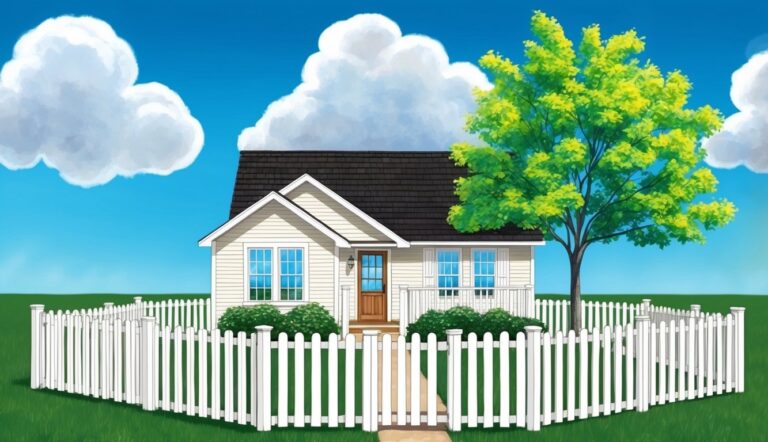Your home is likely your most valuable asset, and protecting it should be a top priority.
While you can’t prevent every disaster, having the right insurance coverage can provide crucial financial protection and peace of mind.
Proper homeowners insurance safeguards your property, belongings, and financial wellbeing in case of unexpected events. By understanding the various types of coverage available and how to optimize your policy, you can ensure your home and possessions are adequately protected without overpaying for unnecessary extras.
This article will explore seven key ways to protect your home through smart insurance choices.
1) Evaluate Your Home’s Value
To protect your home with the right insurance coverage, you need to start by accurately assessing its value.
Your home’s value determines the amount of dwelling coverage you’ll need on your homeowners insurance policy.
Homes are valued in different ways, including appraised value, assessed value, fair market price, replacement value, and actual cash value.
Each of these methods serves a different purpose in determining your home’s worth.
For insurance purposes, focus on the replacement value of your home.
This represents the cost to rebuild your house from the ground up using similar materials and craftsmanship.
Consider factors such as your home’s location, building materials, size, age, and overall condition.
These elements play a crucial role in calculating the replacement cost.
Don’t rely solely on your home’s purchase price or current market value.
These figures may not accurately reflect the true cost of rebuilding your home in case of a total loss.
To get an accurate estimate, you can hire a professional appraiser or use online valuation tools.
Many insurance companies also offer their own replacement cost calculators.
Remember to reassess your home’s value regularly, especially after major renovations or improvements.
This ensures your coverage remains adequate as your home’s value changes over time.
2) Understand Policy Types
Homeowners insurance comes in several forms, each tailored to different needs.
The most common type is the HO-3 policy, which covers your home’s structure and belongings against a wide range of perils.
If you own a condo, you’ll need an HO-6 policy.
This covers your unit’s interior and personal property, while the condo association typically insures the building’s exterior and common areas.
For renters, an HO-4 policy protects your personal belongings and provides liability coverage.
Your landlord is responsible for insuring the building structure.
If you have a high-value home, consider an HO-5 policy.
It offers broader coverage and higher limits for both your home and possessions.
Older homes may require an HO-8 policy, which provides more limited coverage due to the increased risks associated with aging structures.
For manufactured or mobile homes, an HO-7 policy is designed to address their unique characteristics and risks.
Understanding these policy types helps you choose the right coverage for your specific situation.
Always review the details of your policy to ensure it meets your needs and provides adequate protection for your home and belongings.
3) Consider Flood Insurance
Flood damage can be devastating to your home and belongings.
Many homeowners are surprised to learn that standard homeowners insurance policies do not cover flood damage.
To protect your property from flood risks, you need to purchase separate flood insurance.
The National Flood Insurance Program (NFIP) offers flood coverage to homeowners, renters, and business owners. NFIP insurance is available regardless of your flood risk and provides up to $250,000 in building coverage and $100,000 in contents coverage for residential properties.
You may want to consider flood insurance even if you don’t live in a high-risk flood zone.
Floods can occur anywhere due to heavy rains, melting snow, or other factors.
Having flood insurance gives you peace of mind and financial protection against unexpected water damage.
When purchasing flood insurance, carefully review the coverage limits and what’s included.
Some policies may cover the structure of your home but not your personal belongings. Make sure you understand what’s protected and consider additional coverage if needed.
Remember that flood insurance typically has a 30-day waiting period before it becomes effective.
Don’t wait until a storm is approaching to buy coverage.
Plan ahead and secure your flood insurance well in advance of potential flood events.
4) Bundle Home and Auto
Combining your home and auto insurance policies can be a smart financial move.
Many insurance companies offer bundling discounts that can help you save money on your premiums.
When you bundle, you’ll typically see savings on both policies.
Discounts can range from 6% to 23%, depending on the insurer.
This can add up to significant annual savings.
Beyond cost savings, bundling often simplifies your insurance management.
You’ll have a single point of contact for both policies, making it easier to handle claims and policy updates.
Some top-rated insurers for home and auto bundles include State Farm, Erie Insurance, and Nationwide.
These companies offer competitive rates and strong coverage options for bundled policies.
When considering a bundle, compare quotes from multiple insurers.
Each company calculates discounts differently, so shopping around can help you find the best deal for your specific situation.
Remember to review your coverage needs carefully.
While bundling can save money, it’s crucial to ensure both your home and auto policies provide adequate protection.
Don’t sacrifice necessary coverage for a lower price.
Bundling can also make it easier to meet insurance requirements.
For example, if your mortgage lender requires home insurance, bundling can help you secure coverage while potentially lowering your overall insurance costs.
5) Increase Deductibles
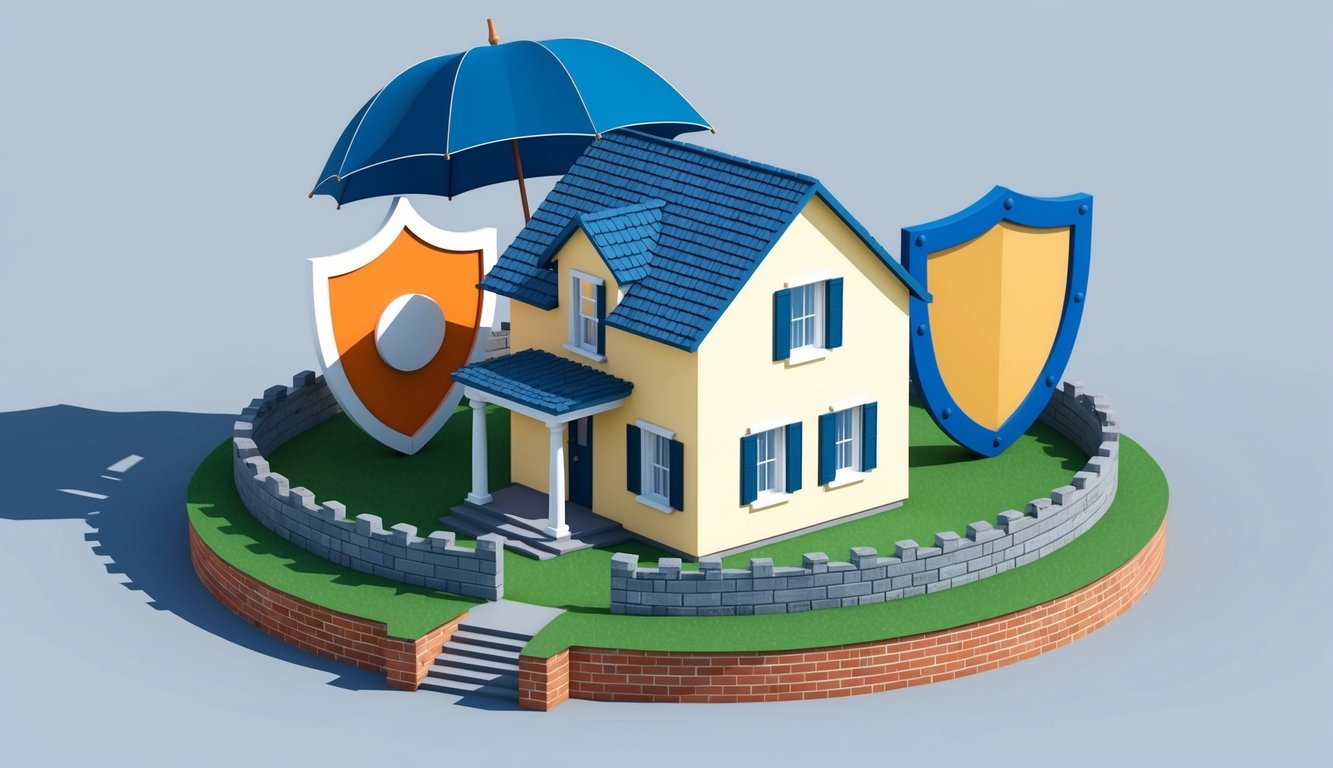
Raising your homeowners insurance deductible can be an effective way to reduce your premium.
The deductible is the amount you pay out of pocket before your insurance coverage kicks in for a claim.
By choosing a higher deductible, you assume more financial responsibility in the event of a claim.
In return, your insurance company typically rewards you with lower monthly or annual premiums.
For example, increasing your deductible from $500 to $1,000 could lead to significant savings on your insurance costs.
Some homeowners opt for even higher deductibles, such as $2,500 or $5,000, to maximize their premium reductions.
Before raising your deductible, carefully consider your financial situation.
Ensure you have enough savings to cover the higher out-of-pocket expense if you need to file a claim.
It’s wise to request quotes for different deductible levels from your insurer.
This will help you determine the optimal balance between premium savings and your comfort level with potential out-of-pocket costs.
Remember that the amount you save on premiums may vary depending on your location, the value of your home, and your insurance provider.
Always compare options to find the best fit for your needs and budget.
6) Get Coverage for Personal Belongings

Personal property coverage is a crucial part of homeowners insurance.
It protects your belongings from theft, damage, or destruction due to covered perils.
This coverage typically extends to items like furniture, clothing, electronics, and appliances. Personal property insurance can help pay to repair or replace these items if they’re damaged or stolen.
You need enough coverage to replace all your possessions.
Take inventory of your belongings and estimate their total value.
This will help you determine the right amount of coverage.
Some high-value items may have coverage limits.
These could include jewelry, artwork, or collectibles.
Consider additional riders or floaters for these special items to ensure full protection.
Personal property coverage often applies to belongings outside your home too.
This means your items are protected even when you’re traveling or away from home.
The average cost of home insurance in the U.S. for 2024 is around $1,754 per year.
This typically includes $150,000 in personal property coverage.
Review your policy regularly to ensure your coverage keeps pace with new purchases.
Update your inventory and adjust your coverage as needed to maintain adequate protection for all your belongings.
7) Review Liability Protection

Liability protection is a crucial part of your homeowners insurance policy.
It safeguards you financially if someone is injured on your property or if you accidentally damage someone else’s property.
Standard policies typically include personal liability coverage of $100,000.
However, this amount may not be sufficient to protect your assets in the event of a major lawsuit.
Consider increasing your liability coverage to at least $300,000 or more, depending on your net worth and potential risks.
This extra protection can be surprisingly affordable.
For comprehensive protection, look into an umbrella policy.
This provides additional liability coverage beyond your homeowners and auto insurance limits, typically in increments of $1 million.
Review your policy regularly to ensure your liability coverage keeps pace with your changing circumstances.
Major life events like starting a business from home or installing a pool may necessitate adjustments to your coverage.
Don’t forget to assess coverage for specific risks.
If you have a dog, check that your policy covers dog bites.
Some breeds may be excluded or require additional coverage.
Understanding Home Insurance Basics
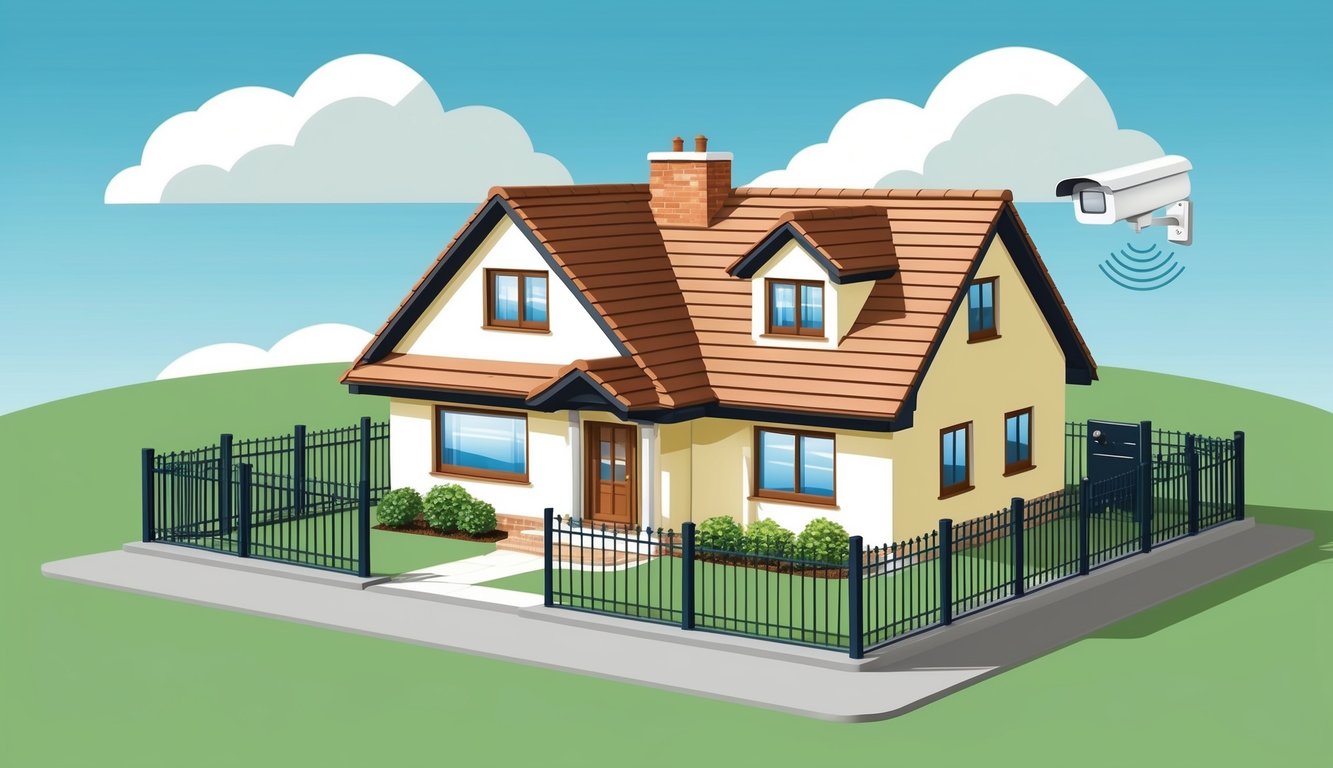
Home insurance provides essential financial protection for homeowners.
It safeguards your property and belongings while offering liability coverage for accidents on your premises.
What Home Insurance Covers
Homeowners insurance policies typically cover damage to your home’s structure and contents from unexpected events.
This includes protection against fire, storms, theft, and certain natural disasters.
Your policy may also cover additional living expenses if your home becomes uninhabitable due to a covered event.
Most policies insure your personal belongings at 50% to 70% of your home’s insured value.
For example, if your home is insured for $300,000, your personal property coverage might range from $150,000 to $210,000.
Standard policies often exclude damage from floods and earthquakes, so you may need to purchase separate coverage for these risks.
The Importance of Liability Coverage
Liability coverage is a crucial component of your homeowners insurance.
It protects you financially if someone is injured on your property and decides to sue.
This coverage can help pay for legal fees, medical expenses, and potential settlements.
Your policy’s liability coverage extends beyond your property.
It typically follows you, providing protection even when you’re away from home.
For instance, if your dog bites someone at the park, your liability coverage may apply.
Most standard policies offer at least $100,000 in liability protection.
However, you may want to consider increasing this amount based on your assets and potential risks.
Assessing Your Coverage Needs
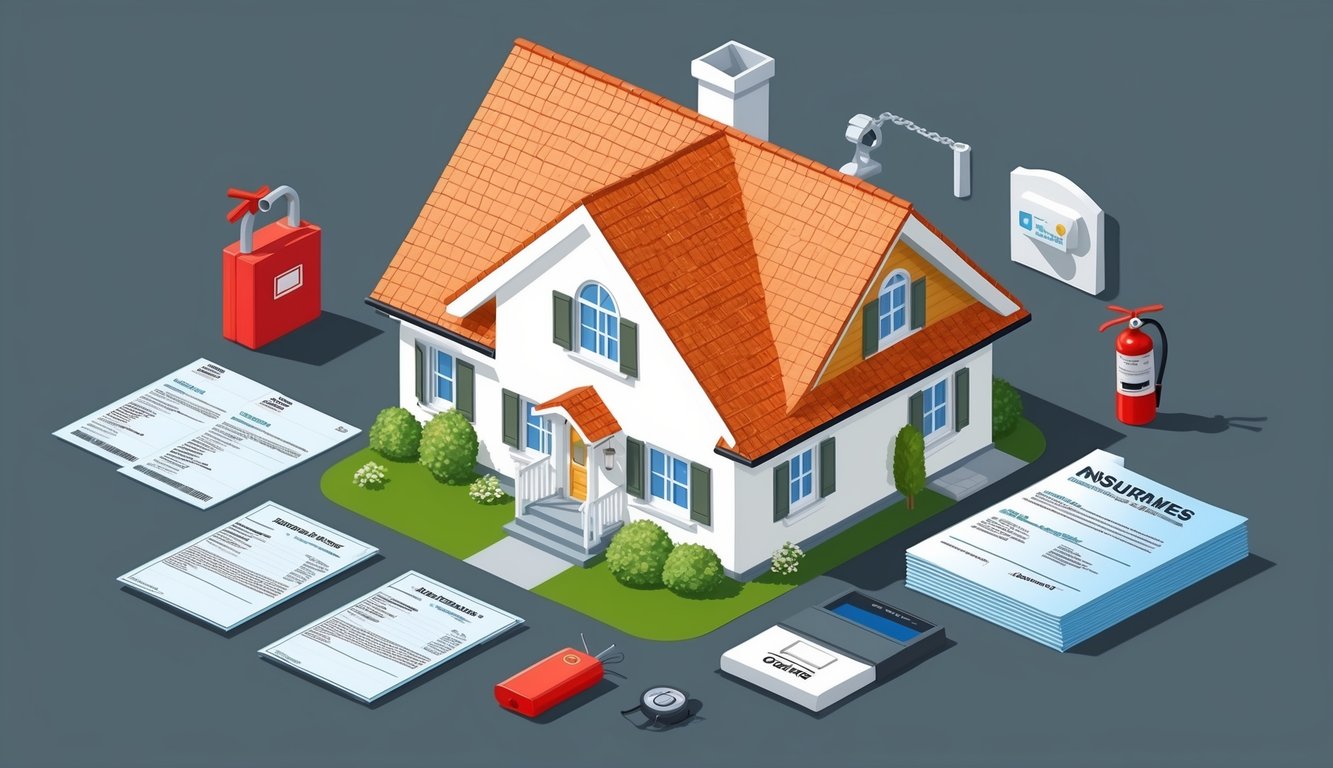
Determining the right insurance coverage for your home requires careful evaluation of your property’s value and potential risks.
You’ll need to consider factors like replacement cost versus actual cash value to ensure adequate protection.
Evaluating Property Value and Risks
Start by accurately estimating your home’s value.
This includes the structure itself and any attached structures like garages.
Don’t forget to account for valuable personal belongings inside.
Next, assess potential risks to your property.
These may include:
- Natural disasters common in your area
- Crime rates in your neighborhood
- Age and condition of your home
Consider additional coverage for high-value items like jewelry or art, as these often require separate policies or riders.
Review your liability coverage as well.
A typical policy might offer $100,000, but experts often recommend $300,000 to $500,000 in liability protection.
Considering Replacement Cost vs. Actual Cash Value
When selecting coverage, you’ll need to choose between replacement cost and actual cash value policies.
Replacement cost coverage pays to rebuild your home or replace belongings at current prices.
Actual cash value policies factor in depreciation, potentially leaving you with less coverage.
While these policies often have lower premiums, they may not provide enough funds to fully rebuild or replace your possessions.
For most homeowners, replacement cost coverage offers better protection.
It ensures you can restore your home and belongings to their pre-loss condition without significant out-of-pocket expenses.
Consider inflation and rising construction costs when setting your coverage limits.
Some policies offer extended replacement cost coverage, providing an additional percentage above your policy limit.
Additional Coverage Options
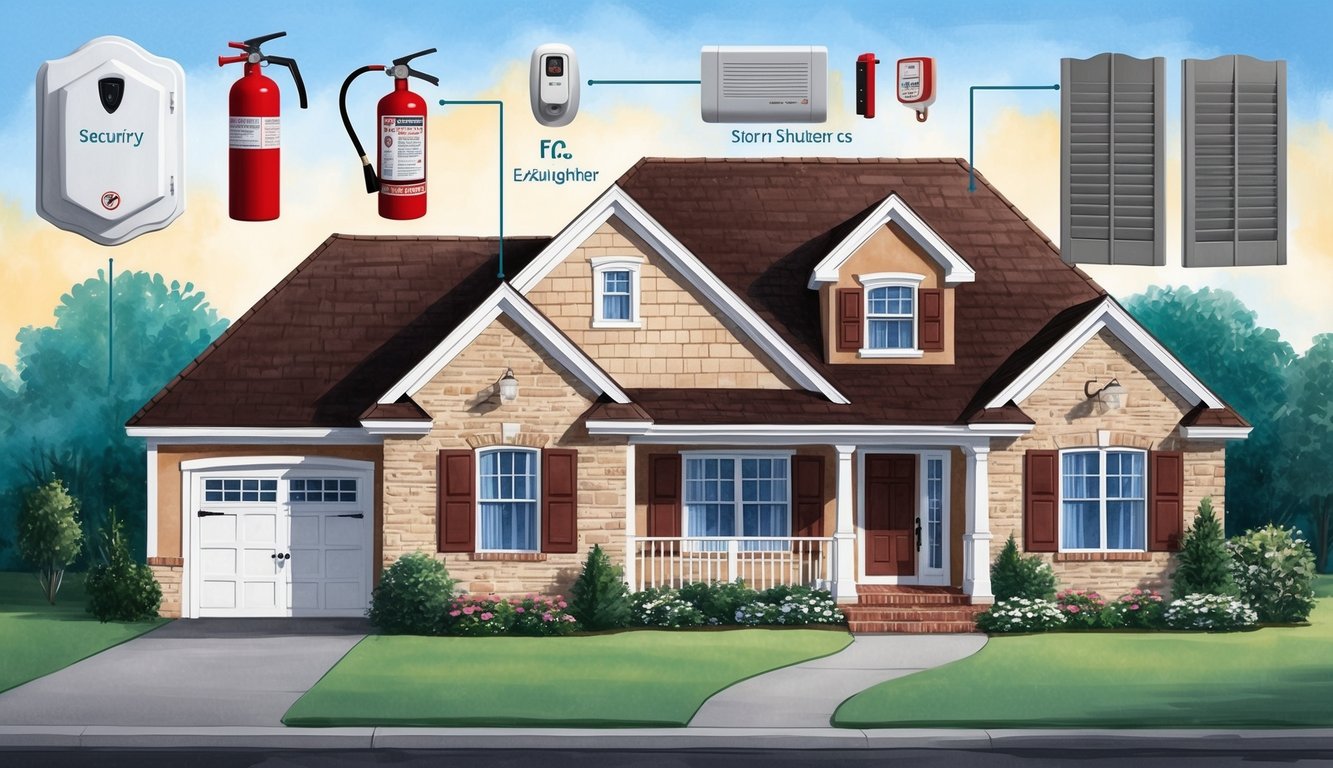
Standard homeowners insurance policies may not cover all potential risks.
Expanding your coverage can provide crucial protection for specific threats and valuable possessions.
Flood and Earthquake Insurance
Flood insurance is essential for homes in flood-prone areas.
Most standard policies don’t include flood coverage, leaving you vulnerable to significant water damage costs.
You can purchase flood insurance through the National Flood Insurance Program or private insurers.
Coverage typically includes damage to your home’s structure and contents.
Earthquake insurance is vital in seismically active regions.
It covers repairs to your home and personal property damaged by seismic events.
Some insurers offer this as an endorsement to your existing policy, while others sell it as a separate policy.
Consider your location’s risk factors when deciding on these additional coverages.
The peace of mind they provide can be invaluable in the event of a disaster.
Riders for High-Value Items
Standard policies often have coverage limits for valuable items like jewelry, art, or electronics. Riders, also known as endorsements, can provide additional protection for these high-value possessions.
To add a rider, follow these steps:
- Identify items exceeding your policy’s standard limits.
- Get professional appraisals for accurate valuations.
- Choose appropriate coverage levels.
- Work with your insurer to add the rider to your policy.
Riders typically offer broader protection, including coverage for accidental loss or mysterious disappearance.
They also often come with lower or no deductibles, making claims easier and more cost-effective for you.
Regularly review and update your riders as you acquire new valuable items or as their worth changes over time.


